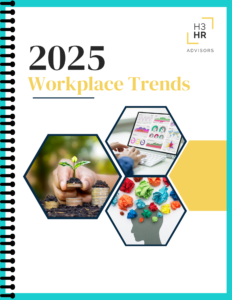The Childcare Crisis Facing American Workers
June 21, 2024
The Covid-19 pandemic challenged the economy and the workforce like no other event before, and for childcare in particular, its lingering effects have continued to leave a lasting impact. During the early pandemic years many day cares were forced to close, due to health protocols and staff shortages. At the same time, most schools shifted to remote learning, and parents attempted to juggle their children with their jobs. It was an exceedingly difficult few years for working parents, especially those with school-age children and younger.
While employment in the childcare industry has made a post-pandemic return to the baseline level of late 2019, according to the latest data from the Bureau of Labor Statistics, a shortage of workers and available spaces for children in some areas are creating challenges for the industry overall – and forcing parents to make tough decisions.
Childcare costs are also continuing to rise for families. A February report from Bank of America showed that during the fourth quarter of 2023, the average childcare payment per household rose between 15% and nearly 30% compared to the prior year. While all income groups saw their childcare costs climb, the largest increase was seen by households with average incomes between $100,000 and $250,000 annually.
In the US, childcare costs are increasingly a significant burden for working families. On average, two-income households with children spend at least 10% of their income on childcare, with many families seeing a full quarter of their incomes being directed to childcare costs.
And these rising costs extend a trend seen over the past 30+ years. According to data from the Federal Reserve, since 1990, childcare costs have surged by 263%, far outpacing overall inflation, which was “only” 133% during that period.
Demographics also contribute to the workplace implications of unavailable and unaffordable childcare options for workers. An estimated 12,000 millennials, the largest generation by percentage in the workforce, turn 35 every day. These millennials are in their prime ages for establishing and growing in their careers, building families, and needing access to childcare.
Access
For years, American parents have struggled to find and maintain stable childcare regardless of family roles, paid work status, geography, or income. Research from advocacy group Childcaredeserts.org shows that roughly half of Americans live in childcare deserts, which is defined as any census tract with more than 50 children under age 5 that contains either no childcare providers or so few options that there are more than three times as many children as licensed childcare spaces. These deserts, impacting millions of American workers and their families, pose a significant barrier to family establishment and labor force participation – especially for mothers.
In September, federal relief funding established to support over 220,000 childcare programs during the pandemic abruptly expired. This steep drop-off in investment, termed a child-care cliff, is projected to close thousands of preschools and childcare centers around the country. Some families already feel the impact, and many more may soon find themselves in situations.
While some federal government data indicates that the number of childcare establishments increased since before the pandemic, the number of employees per establishment decreased – reinforcing the anecdotal evidence that childcare workers, especially qualified workers, are extremely difficult to find and recruit. However, national childcare employment has not fully recovered to pre-pandemic levels, with variations across individual states. Beyond all the data and statistics, simply ask yourself or colleagues with children needing some level of caregiving just how easy or difficult it is to find and access local affordable and quality childcare. For more Americans, that answer is “exceedingly difficult.”
Affordability
According to the National Database of Childcare Prices, which covers 2,360 counties across 47 states, childcare prices vary significantly by provider type and children’s age. Adjusted for inflation to 2022 dollars, here are some key findings from their research:
School-Age Home-Based Care (Small Counties): The median yearly cost is approximately $5,357.
Infant Center-Based Care (Very Large Counties): The median yearly cost is about $17,171.
Long-Term Trend: Over the past decade, childcare costs have consistently risen. Families now spend, on average, 27% of their household income on childcare expenses, making it a significant financial burden and well above the federal guidelines of 10% of income budgeted for childcare expenses.
Impact on Families: High childcare prices disproportionately affect working families. Even in lower-priced areas, prices remain untenable. For instance, in nearly every county, childcare costs are high relative to family income, often pricing families out of paid childcare options – if they are even available. This situation is especially detrimental to maternal employment, as mothers’ participation in the workforce decreases in areas with expensive childcare, even when women’s wages are higher, according to data from the Department of Labor.
Provider Margins and Worker Wages: Paradoxically, while childcare is expensive for families, providers operate on thin profit margins, and childcare workers receive exceptionally low wages (a median of only $13.22 per hour). This wage level falls below the living wage in most states, leading to challenges in attracting sufficient workers. Consequently, many areas are considered childcare deserts, leaving families with limited options.
Corporate Programs to Support Caregivers
As with any workplace and worker wellbeing issue, access and affordability of childcare options for employees is a primary concern for organizations and employers of all sizes. Some larger employers have created their own onsite childcare facilities and programs for employees and their families. Onsite daycare programs offered by US corporations can significantly benefit employees and employers by easing the process of travel to and from an offsite care location and often by providing quality care at subsidized prices.
Some examples of companies that provide childcare services and programs include:
Aflac, a major provider of supplemental insurance, offers onsite daycare at its main branch in Columbus, Georgia. Employees not based in Columbus can use a subsidy to offset costs at local daycare centers.
The Home Depot company has over 2,300 retail locations and features a daycare facility at its Atlanta, Georgia headquarters. The facility enrolls children up to 5 years old and opens limited spots for older children during the summer.
Johnson & Johnson opened a Child Development Center catering to employees in 1990. Today, there are five childcare centers across company campuses in the U.S., offering programs from infancy through kindergarten at a subsidized cost for employees, making work-life blend a little bit easier for moms and dads.
These kinds of onsite daycare programs offer several benefits for both employees and employers, including:
Improved Work-Life Balance: Employees can drop off and pick up their children conveniently during work hours, reducing stress related to childcare logistics.
Increased Productivity: When parents have peace of mind about their children’s care, they can focus better on their work tasks.
Enhanced Employee Retention: Onsite daycare can be a powerful retention tool. Employees are more likely to stay with an employer that supports their family needs.
Reduced Absenteeism: Parents are less likely to miss work due to childcare emergencies or illnesses when daycare is available at the workplace.
Attractive Recruitment Tool: Offering onsite childcare can attract top talent, especially among working parents.
For organizations with large enough employee bases and sufficient facilities and resources, onsite and subsidized childcare can be a significant benefit for employees with families, and can often be leveraged as an important tool for employee satisfaction and retention.
Third-Party Benefits Providers
KinderCare and Bright Horizons are two well-known providers that offer infrastructure and assistance in developing customized childcare plans for employees. They have multiple locations throughout the United States and can provide priority waitlist placement for employees.
Bright Horizons was founded in 1986 and offers childcare, elder care, and help for education and careers – tools used by over 1,000 of the world’s top employers and power many of the world’s best brands. In addition to working with employers to establish onsite childcare facilities, Bright Horizons also works with employers to provide employees with back-up childcare options – when situations arise, leaving the employee with a difficult choice of calling off work or placing a child in less optimal care circumstances. Employees can contact Bright Horizons to get help finding care, saving its customers and employees more than a million workdays every year.
KinderCare Learning Companies helps organizations, and their employees better integrate work with life as the nation’s leading provider of employer-sponsored childcare benefits. They have partnered with over 600 organizations to answer their working parents’ call for quality childcare in the communities where they work and live nationwide. KinderCare works with employers in several ways – through onsite and near-site centers, back-up care options for employees, and tuition assistance programs that can be offered to employees as part of their overall benefits program.
Other third-party intermediaries include Care.com, TOOTRiS, and WeeCare. These companies can help employees find suitable childcare options and manage partnerships with childcare providers.
Conclusion
Policy advocates have argued that accessibility and affordability of childcare, including for infants and toddlers, is an economic issue that affects all Americans, not just those with young kids.
Affordable, accessible childcare is crucial for higher employment rates, reduced poverty, and addressing socioeconomic disparities. However, the childcare ecosystem likely requires substantial government investment to function adequately and eventually thrive in a way that works for more American families.
To put this in perspective, U.S. public spending on childcare is less than $500 per child in early care and education during the first three years of life, and only $2,800 for three- or four-year-old children. Clearly, the combination of high costs, limited access, especially in childcare deserts, and overall economic conditions is placing unsustainable stress on working families in America.
In summary, the rising costs of childcare impact both families’ financial well-being and workforce participation. Addressing this challenge requires a concerted effort to make quality childcare more affordable and accessible.
Enhanced employer support of employees and their childcare challenges can ease the financial burden on working parents and contribute to employee satisfaction, productivity, and retention. By offering childcare support, companies create a more inclusive and family-friendly workplace, ultimately benefiting employees and employers.
How we can help
Led by Trish Steed and Steve Boese, H3 HR Advisors harnesses over 40 years of experience to delivery HCM insights and guidance to global organizations.
H3 HR Advisory services
By leveraging technology, analytics, and our deep industry knowledge we can help you to reposition your workforce and ensure that you have the right people with the right capabilities in the right roles to positively impact the growth of your business.
HR Happy Hour Podcast Network
Created in 2009, The HR Happy Hour Show is hosted by Steve Boese and Trish Steed and is the longest continuously running internet radio show and podcast on Human Resources, HR Technology, Talent Practices, Workplace and Leadership topics.
H3 HR Speaking Services
We work closely with every client to customize your content - keynotes, webinars, research, infographics, and buyer’s guides - to inspire, educate and inform the audience enabling you to reset and realign your organization for a talent-led breakthrough.
Get in touch
Talk to us today and find out how we can help you and your organization leverage HCM technology to attract, onboard, retain and manage top talent.




